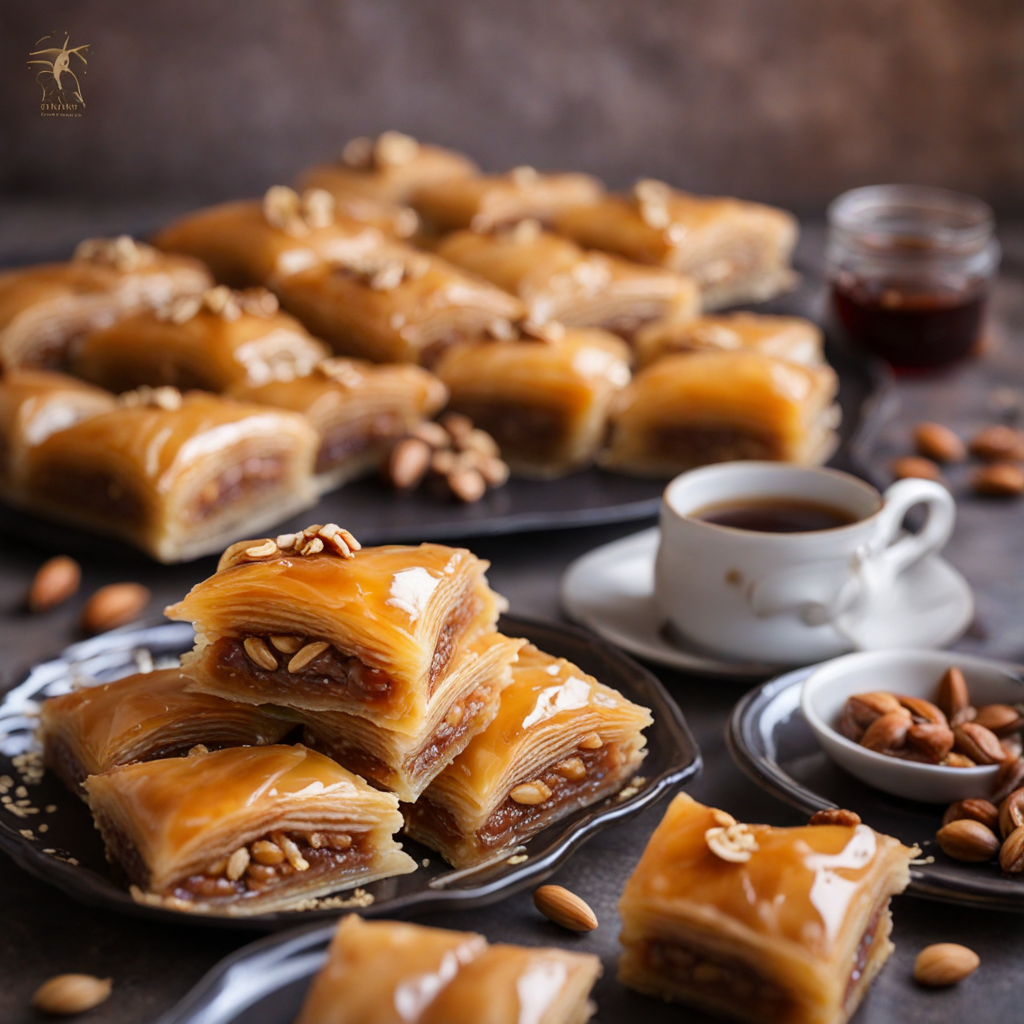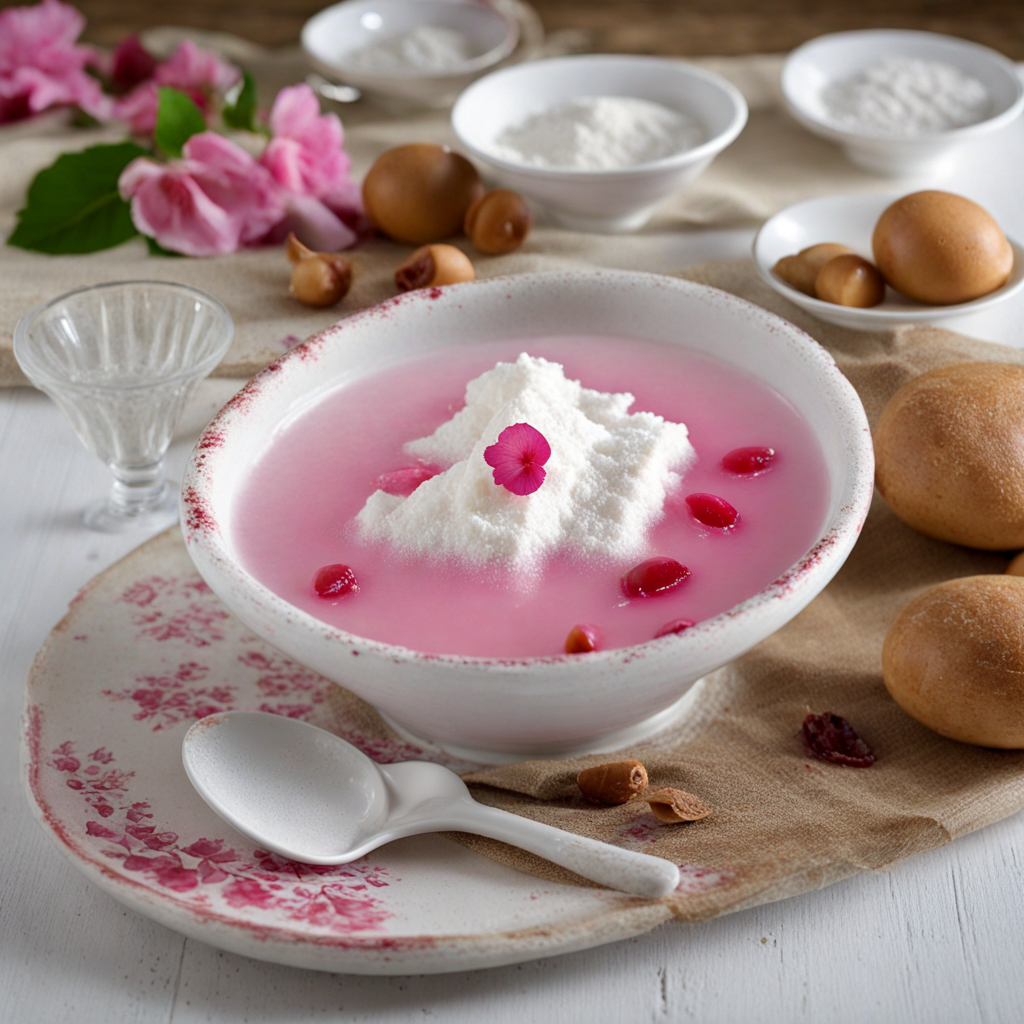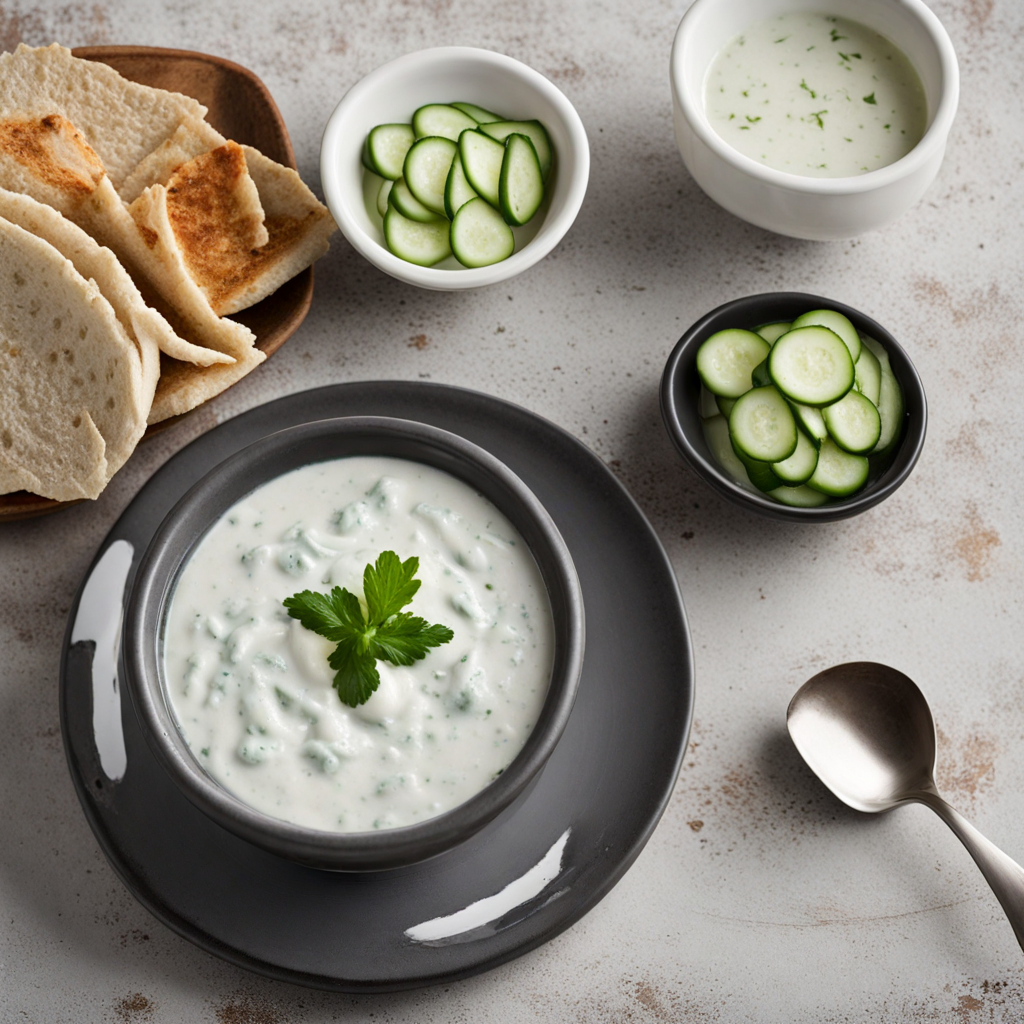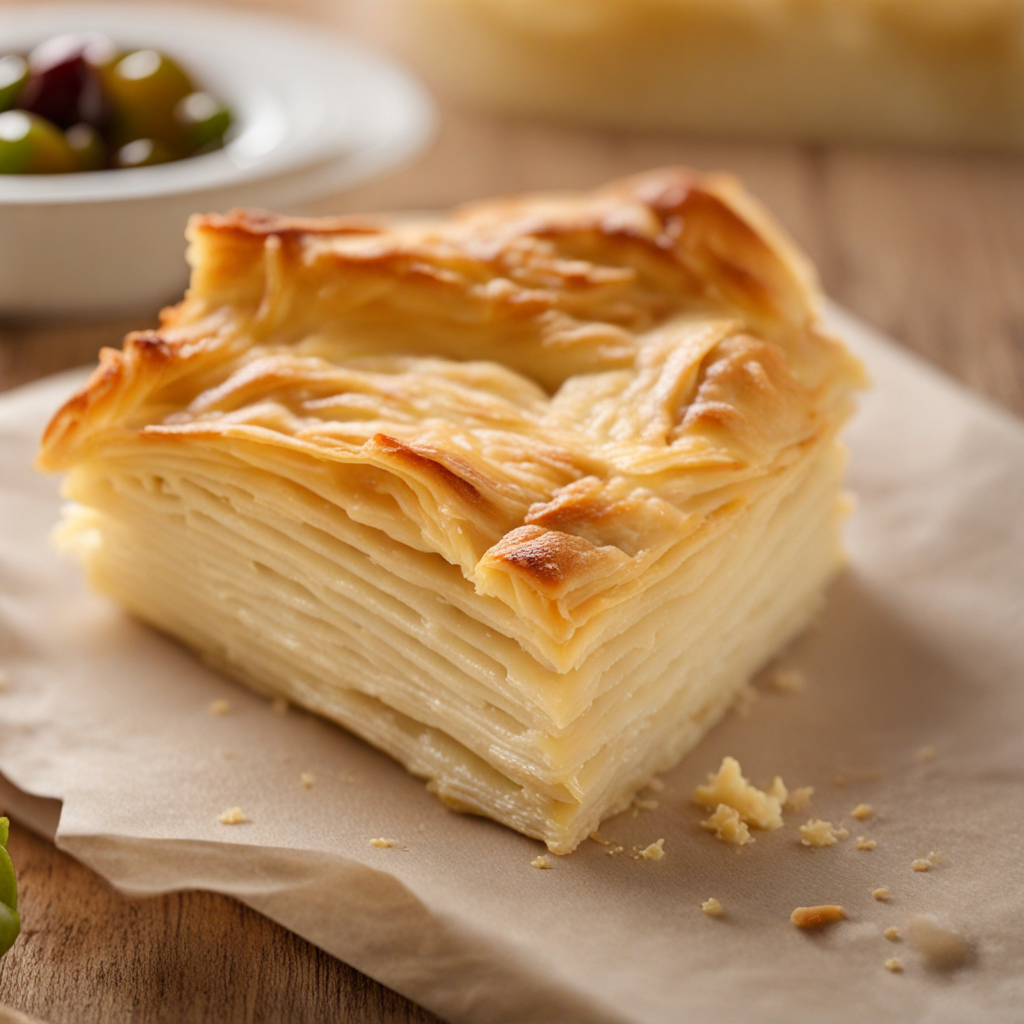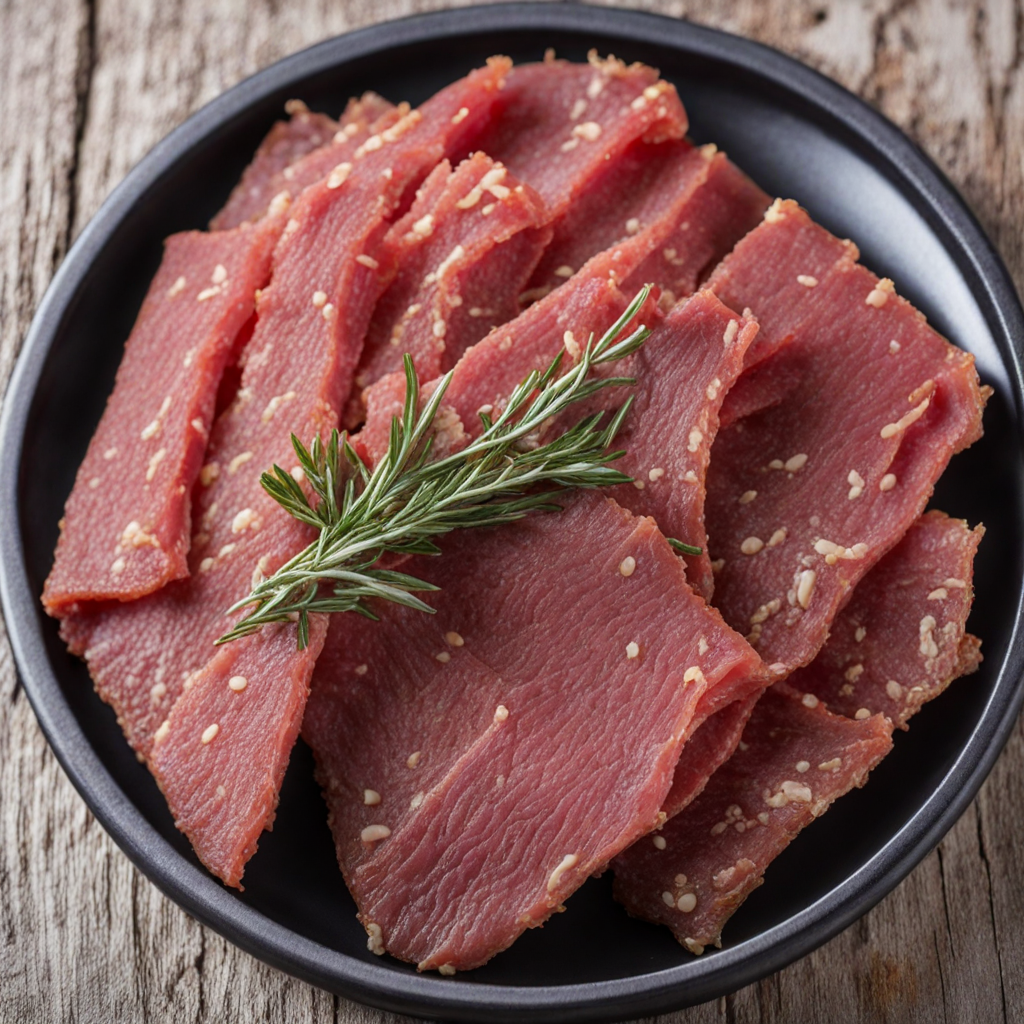Baklava
Baklava is a delightful pastry that embodies the rich culinary heritage of Cyprus, offering a unique blend of flavors and textures that is sure to captivate any food lover. This sumptuous dessert is made from layers of thin, flaky phyllo dough, which is carefully brushed with melted butter to create a light and crispy texture. The layers are filled with a mixture of finely chopped nuts, typically walnuts or pistachios, and sweetened with sugar and aromatic spices such as cinnamon. The result is a harmonious balance of crunch and chewiness that melts in your mouth with each bite. Once baked to a golden perfection, baklava is generously drizzled with a fragrant syrup made from honey, water, and lemon juice, which seeps into the layers and infuses them with a delightful sweetness. This syrup not only enhances the flavor but also adds a glossy finish to the pastry, making it visually appealing. The combination of the nutty filling, the crisp phyllo, and the sweet syrup creates a symphony of taste that is both comforting and indulgent, inviting you to savor every morsel. In Cyprus, baklava is often enjoyed during festive occasions and celebrations, making it a beloved treat that brings people together. Its rich history is intertwined with the island's cultural influences, reflecting the fusion of flavors that characterize Cypriot cuisine. Whether served as a dessert after a hearty meal or enjoyed with a cup of strong coffee, baklava offers a delightful escape into a world of sweet decadence, making it a must-try for anyone eager to explore new culinary experiences.
How It Became This Dish
The Sweet Saga of Baklava: A Culinary Journey Through Cyprus When we think of desserts that have transcended borders and cultures, baklava undoubtedly stands out. This decadent pastry, rich in history and flavor, has captured the hearts—and palates—of many. In Cyprus, baklava takes on a unique character, deeply intertwined with the island’s multifaceted cultural heritage. This essay explores the origins, cultural significance, and evolution of baklava in Cyprus, highlighting its role as a symbol of unity and diversity. Origins: A Tapestry of Cultures The exact origins of baklava are somewhat shrouded in mystery, with multiple cultures laying claim to its invention. Historians generally agree that the roots of baklava can be traced back to ancient Mesopotamia, where layered flatbreads were filled with nuts and honey. The Assyrians are often credited with creating an early form of the pastry, but it was the Ottoman Empire that truly popularized and refined it. The Ottomans, who ruled Cyprus from 1571 to 1878, played a crucial role in shaping the culinary landscape of the island. They brought with them their rich traditions, which merged with the local Greek, Turkish, and Arab influences. The result was a unique version of baklava that retained its essence while absorbing the flavors and techniques of the island's diverse populations. Cultural Significance: A Symbol of Hospitality and Celebration In Cyprus, baklava is more than just a dessert; it is a symbol of hospitality and celebration. Traditionally, it is served during special occasions such as weddings, religious festivals, and family gatherings. The act of preparing and sharing baklava signifies warmth and generosity, embodying the Cypriot spirit of welcoming guests into one’s home. The preparation of baklava is often a communal affair, where family members come together to create this intricate dessert. The process involves layering sheets of phyllo dough with a mixture of finely chopped nuts—typically walnuts, pistachios, or almonds—drenched in fragrant spices like cinnamon and cloves. Once baked to a golden perfection, the pastry is soaked in a syrup made of sugar, water, and lemon juice or honey, allowing it to absorb the sweet nectar that binds the flavors together. In Cypriot culture, baklava is often associated with the notion of "kefi," a term that embodies the spirit of joy and enthusiasm. It is a dish that evokes memories of shared moments and familial bonds, often being passed down through generations. Each family may have its own recipe, reflecting personal touches and regional variations, further enriching the culinary heritage of Cyprus. Development Over Time: Layers of History As Cyprus navigated its political landscape, so too did baklava evolve. The island's complex history—marked by periods of foreign rule, intercommunal strife, and eventual independence—has influenced the way baklava is perceived and prepared. In the late 19th and early 20th centuries, with the rise of nationalism and cultural identity, baklava became a source of pride for both Greek Cypriots and Turkish Cypriots. During these times, baklava was often presented as a representation of Cypriot identity. Greek Cypriots tended to emphasize the use of honey as a sweetener, while Turkish Cypriots favored sugar syrup. This divergence in preparation methods highlighted broader cultural distinctions while also serving as a reminder of the shared culinary heritage that binds the two communities. In modern times, baklava continues to be a popular treat in Cyprus, enjoyed by locals and tourists alike. The island's vibrant food scene has embraced both traditional and contemporary interpretations of the dish. Bakeries and restaurants offer a range of variations, from classic baklava to innovative twists that incorporate local ingredients, such as carob syrup or local citrus fruits. This adaptability reflects a broader trend in Cypriot cuisine, which celebrates both heritage and innovation. The Globalization of Baklava With globalization, baklava has transcended its regional roots and gained international recognition. In immigrant communities around the world, it has become a beloved dessert that serves as a reminder of home. The Cypriot diaspora, in particular, has played a pivotal role in promoting baklava as an emblem of their culture. Festivals and food fairs often showcase the dish, where it is not only consumed but also celebrated as part of the rich tapestry of Cypriot identity. In the context of globalization, baklava has also undergone reinterpretation. Chefs and home cooks alike experiment with flavors and presentations, incorporating elements from various cuisines. Fusion versions of baklava can be found in many international settings, reflecting the versatility of this pastry. Whether it is baklava ice cream, baklava cheesecakes, or even savory versions, the essence of baklava remains—layers of dough, nuts, and sweetness, connecting people through shared culinary experiences. Conclusion: A Pastry of Unity Baklava, particularly in its Cypriot form, is more than just a delectable dessert; it is an emblem of the island's rich cultural heritage and its ability to adapt and thrive through the ages. From its ancient roots to its modern interpretations, baklava represents a convergence of influences, showcasing the island's diverse history and the resilience of its people. As we indulge in this sweet treat, we are reminded of the stories it carries—the communal gatherings, the celebrations of life, and the shared experiences that bind us all. In every bite of baklava, we taste not just the layers of phyllo and nuts, but the essence of Cyprus itself: a land where cultures meet, traditions flourish, and hospitality reigns supreme. Whether enjoyed at a family gathering or a bustling café, baklava continues to be a symbol of unity, transcending borders and generations, and reminding us of the sweetness of life.
You may like
Discover local flavors from Cyprus


